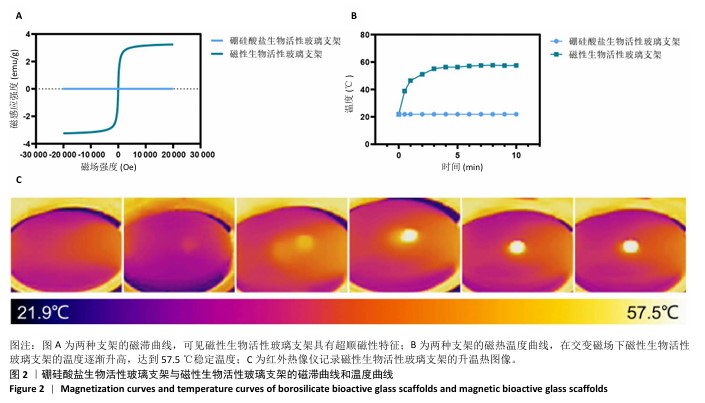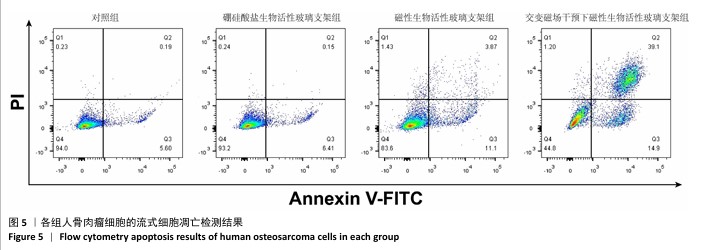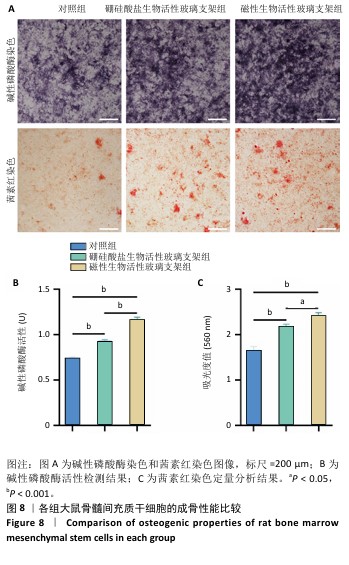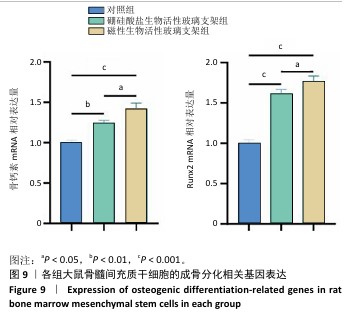[1] HARRISON DJ, GELLER DS, GILL JD, et al. Current and future therapeutic approaches for osteosarcoma. Expert Rev Anticancer Ther. 2018;18(1):39-50.
[2] CHEN C, XIE L, REN T, et al. Immunotherapy for osteosarcoma: Fundamental mechanism, rationale, and recent breakthroughs. Cancer Lett. 2021;500:1-10.
[3] PAPAKONSTANTINOU E, STAMATOPOULOS A, I ATHANASIADIS D, et al. Limb-salvage surgery offers better five-year survival rate than amputation in patients with limb osteosarcoma treated with neoadjuvant chemotherapy. A systematic review and meta-analysis. J Bone Oncol. 2020;25:100319.
[4] JANEWAY KA, GRIER HE. Sequelae of osteosarcoma medical therapy: a review of rare acute toxicities and late effects. Lancet Oncol. 2010; 11(7):670-678.
[5] ZHAO X, WU Q, GONG X, et al. Osteosarcoma: a review of current and future therapeutic approaches. Biomed Eng Online. 2021;20(1):24.
[6] TANG Z, YU D, BAO S, et al. Porous Titanium Scaffolds with Mechanoelectrical Conversion and Photothermal Function: A Win-Win Strategy for Bone Reconstruction of Tumor-Resected Defects. Adv Healthc Mater. 2024;13(7):e2302901.
[7] LI C, ZHANG W, NIE Y, et al. Time-Sequential and Multi-Functional 3D Printed MgO2/PLGA Scaffold Developed as a Novel Biodegradable and Bioactive Bone Substitute for Challenging Postsurgical Osteosarcoma Treatment. Adv Mater. 2024;36(34):e2308875.
[8] LI L, HUANG Y, QIN J, et al. Development of a borosilicate bioactive glass scaffold incorporating calcitonin gene-related peptide for tissue engineering. Biomater Adv. 2022;138:212949.
[9] RAVANBAKHSH M, LABBAF S, KARIMZADEH F, et al. Mesoporous bioactive glasses for the combined application of osteosarcoma treatment and bone regeneration. Mater Sci Eng C Mater Biol Appl. 2019;104:109994.
[10] TIAN P, ZHAO L, KIM J, et al. Dual stimulus responsive borosilicate glass (BSG) scaffolds promote diabetic alveolar bone defectsrepair by modulating macrophage phenotype. Bioact Mater. 2023;26:231-248.
[11] JIN Y, LIU H, CHU L, et al. Initial therapeutic evidence of a borosilicate bioactive glass (BSG) and Fe3O4 magnetic nanoparticle scaffold on implant-associated Staphylococcal aureus bone infection. Bioact Mater. 2024;40:148-167.
[12] FAN M, REN Y, ZHU Y, et al. Borosilicate bioactive glass synergizing low-dose antibiotic loaded implants to combat bacteria through ATP disruption and oxidative stress to sequentially achieve osseointegration. Bioact Mater. 2024;44:184-204.
[13] CIRALDO FE, BOCCARDI E, MELLI V, et al. Tackling bioactive glass excessive in vitro bioreactivity: Preconditioning approaches for cell culture tests. Acta Biomater. 2018;75:3-10.
[14] FANG CH, TSAI PI, HUANG SW, et al. Magnetic hyperthermia enhance the treatment efficacy of peri-implant osteomyelitis. BMC Infect Dis. 2017;17(1):516.
[15] ALMUTAIRI LA, YU B, DYNE E, et al. Mild magnetic hyperthermia is synergistic with an antibiotic treatment against dual species biofilms consisting of S. aureus and P. aeruginosa by enhancing metabolic activity. Int J Hyperthermia. 2023;40(1):2226845.
[16] CAZARES-CORTES E, CABANA S, BOITARD C, et al. Recent insights in magnetic hyperthermia: From the “hot-spot” effect for local delivery to combined magneto-photo-thermia using magneto-plasmonic hybrids. Adv Drug Deliv Rev. 2019;138:233-246.
[17] LUKÁCSI S, MUNKÁCSY G, GYŐRFFY B. Harnessing Hyperthermia: Molecular, Cellular, and Immunological Insights for Enhanced Anticancer Therapies. Integr Cancer Ther. 2024;23:15347354241242094.
[18] AHMED K, ZAIDI SF, MATI-UR-REHMAN, et al. Hyperthermia and protein homeostasis: Cytoprotection and cell death. J Therm Biol. 2020;91:102615.
[19] 袁勋,丁振罡,付力伟,等.甲基丙烯酰化透明质酸/脱细胞华通胶水凝胶支架的制备与表征[J]. 中国组织工程研究,2024,28(22): 3517-3523.
[20] 赵红霞,孙政伟,韩阳,等.富血小板纤维蛋白复合甲基丙烯酰化明胶水凝胶的促成骨性能[J]. 中国组织工程研究,2025,29(4): 809-817.
[21] ZHOU B, JIANG X, ZHOU X, et al. GelMA-based bioactive hydrogel scaffolds with multiple bone defect repair functions: therapeutic strategies and recent advances. Biomater Res. 2023;27(1):86.
[22] JONES JR. Review of bioactive glass: from Hench to hybrids. Acta Biomater. 2013;9(1):4457-4486.
[23] MIGUEZ-PACHECO V, HENCH LL, BOCCACCINI AR. Bioactive glasses beyond bone and teeth: emerging applications in contact with soft tissues. Acta Biomater. 2015;13:1-15.
[24] 丁晶鑫,王会,崔旭,等.硼硅酸盐生物活性玻璃的研究现状与发展趋势[J].硅酸盐学报,2022,50(4):1074-1084.
[25] ŁUCZAK JW, PALUSIŃSKA M, MATAK D, et al. The Future of Bone Repair: Emerging Technologies and Biomaterials in Bone Regeneration. Int J Mol Sci. 2024;25(23):12766.
[26] FAUSKE L, BONDEVIK H, BRULAND ØS, et al. Negative and Positive Consequences of Cancer Treatment Experienced by Long-term Osteosarcoma Survivors: A Qualitative Study. Anticancer Res. 2015; 35(11):6081-6090.
[27] ZHANG X, WEI H, DONG C, et al. 3D printed hydrogel/bioceramics core/shell scaffold with NIR-II triggered drug release for chemo-photothermal therapy of bone tumors and enhanced bone repair. Chem Eng J. 2023;461:141855.
[28] MA Y, ZHANG B, SUN H, et al. The Dual Effect of 3D-Printed Biological Scaffolds Composed of Diverse Biomaterials in the Treatment of Bone Tumors. Int J Nanomedicine. 2023;18:293-305.
[29] VILAS-BOAS V, CARVALHO F, ESPIÑA B. Magnetic Hyperthermia for Cancer Treatment: Main Parameters Affecting the Outcome of In Vitro and In Vivo Studies. Molecules. 2020;25(12):2874.
[30] HAZARIKA KP, BORAH JP. Study of biopolymer encapsulated Eu doped Fe3O4 nanoparticles for magnetic hyperthermia application. Sci Rep. 2024;14(1):9768.
[31] CRISTOFOLINI L, SZCZEPANOWICZ K, ORSI D, et al. Hybrid Polyelectrolyte/Fe3O4 Nanocapsules for Hyperthermia Applications. ACS Appl Mater Interfaces. 2016;8(38):25043-25050.
[32] Vigata M, Meinert C, Hutmacher DW, et al. Hydrogels as Drug Delivery Systems: A Review of Current Characterization and Evaluation Techniques. Pharmaceutics. 2020;12(12):1188.
[33] NARAYANASWAMY R, TORCHILIN VP. Hydrogels and Their Applications in Targeted Drug Delivery. Molecules. 2019;24(3):603.
[34] ZHU M, WANG Y, FERRACCI G, et al. Gelatin methacryloyl and its hydrogels with an exceptional degree of controllability and batch-to-batch consistency. Sci Rep. 2019;9(1):6863.
[35] KONG Y, ZHANG X, MA X, et al. Silicon-substituted calcium phosphate promotes osteogenic-angiogenic coupling by activating the TLR4/PI3K/AKT signaling axis. J Biomater Appl. 2022;37(3):459-473.
[36] WANG C, LIN K, CHANG J, et al. Osteogenesis and angiogenesis induced by porous β-CaSiO(3)/PDLGA composite scaffold via activation of AMPK/ERK1/2 and PI3K/Akt pathways. Biomaterials. 2013;34(1):64-77. |








